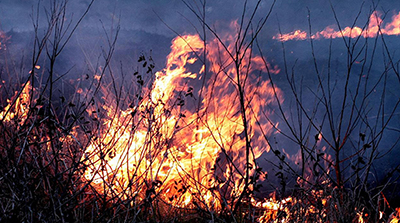
Redfin: Homes with High Fire Risk Sell for More as Americans Flock to Fire-Prone Areas

Redfin, Seattle, said its analysis of homes for sale in high fire-risk areas found the median sale price of U.S. homes with high fire risk was $550,500 in April, compared with $431,300 for homes with low fire risk—a difference of nearly $120,000.
This is the largest premium in dollar terms since at least 2017. By comparison, homes with high fire risk sold for just $56,700 more (18.5%) two years earlier.
The report found fire-prone homes have historically fetched higher prices, likely because they tend to be larger and/or located in pricey West Coast metros. The typical high-fire-risk home purchased in April was 2,000 square feet, while the typical low-risk home was just 1,706 square feet. But the price premium for high-risk homes has surged during the pandemic. That’s in part because scores of Americans moved out of cities and into suburbs and rural areas, where homes are more likely to face fire risk due to the proximity to flammable vegetation. The median sale price of high-risk homes was up 51.7% in April from two years earlier, while the median sale price of low-risk homes was up 40.9%.
“Suburban homes tend to be more expensive because they’re large, and demand for large homes skyrocketed during the pandemic as Americans sought respite from crowded city life,” said Redfin Senior Economist Sheharyar Bokhari. “Pandemic buyers also hunted for deals due to surging home prices, and while fire-prone homes aren’t cheaper on average, buyers may feel they’re getting more bang for their buck because they’re getting more space. And for some pandemic buyers, the fire-prone home they bought in suburbia was actually cheaper than their last home because they were relocating from somewhere like San Francisco or Seattle.”
Research shows while many house hunters are concerned about climate risk when deciding where to live, oftentimes, it’s not a dealbreaker. For some, that’s because factors like relative affordability, home size and proximity to family take precedence. For others, it’s because they’re not aware of the climate risks in the area they’re moving to.
“For a lot of pandemic-era homebuyers, what has felt much more urgent than avoiding fire danger is finding a home they can afford at a time when inventory is so low and prices are so high,” said Corey Keach, a Redfin real estate agent in the Boulder, Colo., area, where the Marshall Fire—the most destructive in the state’s history—destroyed more than 1,000 homes at the end of 2021.
“I worked with a young family whose Louisville home burned down in the Marshall Fire,” Keach said. “Afterwards, they moved to nearby Superior, where a lot of homes also burned down. They just wanted to get into their next home fast because they had already gone through the painstaking buying process in 2020 and were worried prices were going to skyrocket another 20%.”
Redfin also reported fire-prone homes not only sell for more; they also get snatched up faster—another indication that evolving homebuyer preferences during the pandemic made high-risk areas seem more attractive to many house hunters. The typical high-risk home sold in 16 days in April, compared with 20 days for the typical low-risk home. That marks a shift from before the pandemic, when low-risk homes typically sold faster. Another gauge of housing-market speed showed a similar trend: Nearly two-thirds (62.4%) of high-fire-risk homes sold within two weeks in April, compared with just 55.1% of low-risk homes. Prior to the pandemic, high- and low-risk homes had about the same likelihood of selling within two weeks.
